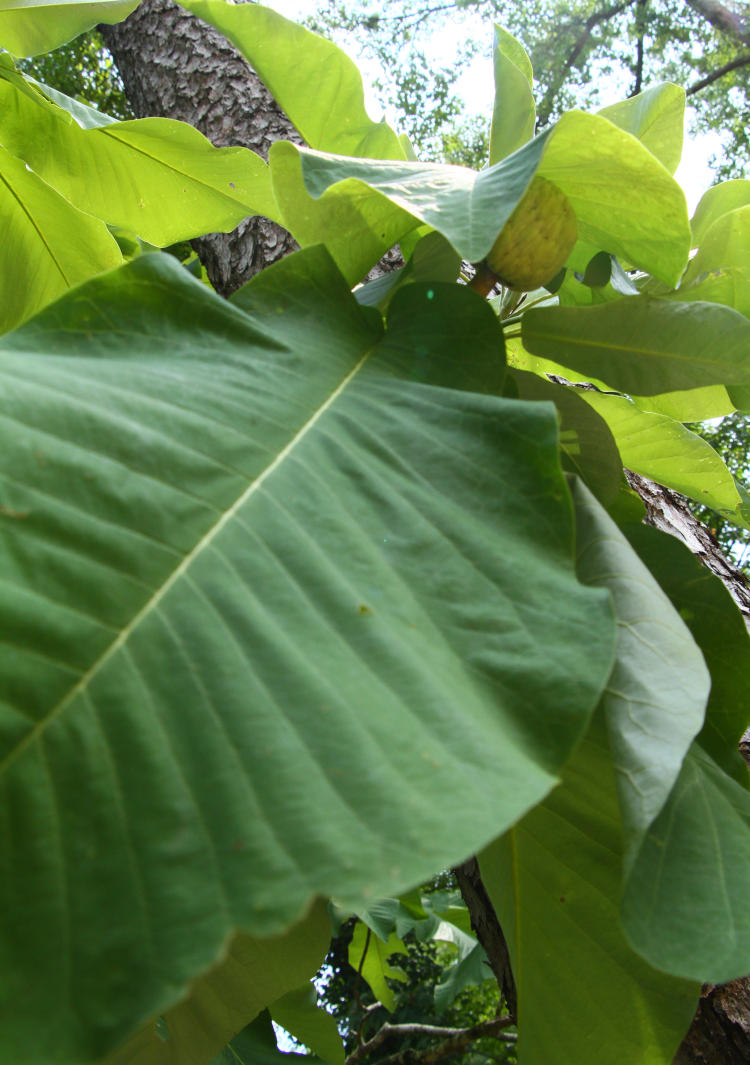
The other day I went out to the NC Botanical Garden for the first time in ages, to see what could be found. Notably, this was the first time in several years, I think, that I found no Carolina anoles during my visit, though we’ll make up for that shortly. There were enough other things to photograph, but like normal, I wasn’t looking for the ID plaques of what I was photographing, so most of my identifications here are tentative and subject to blaming the garden just for the sake of it. For instance, I believe the above image is a bigleaf magnolia (Magnolia macrophylla) – it is certainly distinctly different from the common magnolias around here, but we’re not here for a botanical lecture, just for fartsiness. We may not get that, either.
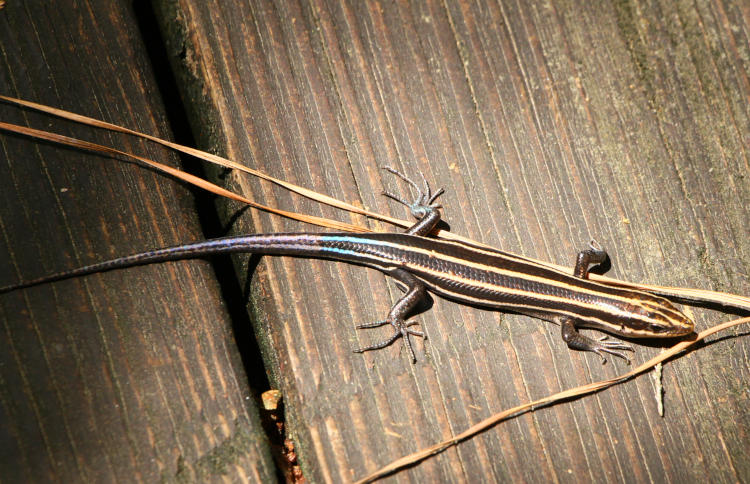
Not even minimal effort of fartsiness here, just a close view of my first find, an American five-lined skink (Plestiodon fasciatus.) The electric blue tail is a trait of juveniles, though this one was large enough I would have thought this would have faded by now, but we have clear evidence that it had dropped its tail sometime in the past and it was now fully regrown. Skinks can actually release their tails on their own, when it isn’t actually pulled off by a predator, and the detached tail will writhe exuberantly for some minutes, hopefully keeping the attention of the predator while the skink, now lacking some of the bright coloring, makes its escape. The tails will grow back, fairly quickly though I have yet to observe one dependably to see just how long it takes. It’s not overnight, but it’s within a season at least.
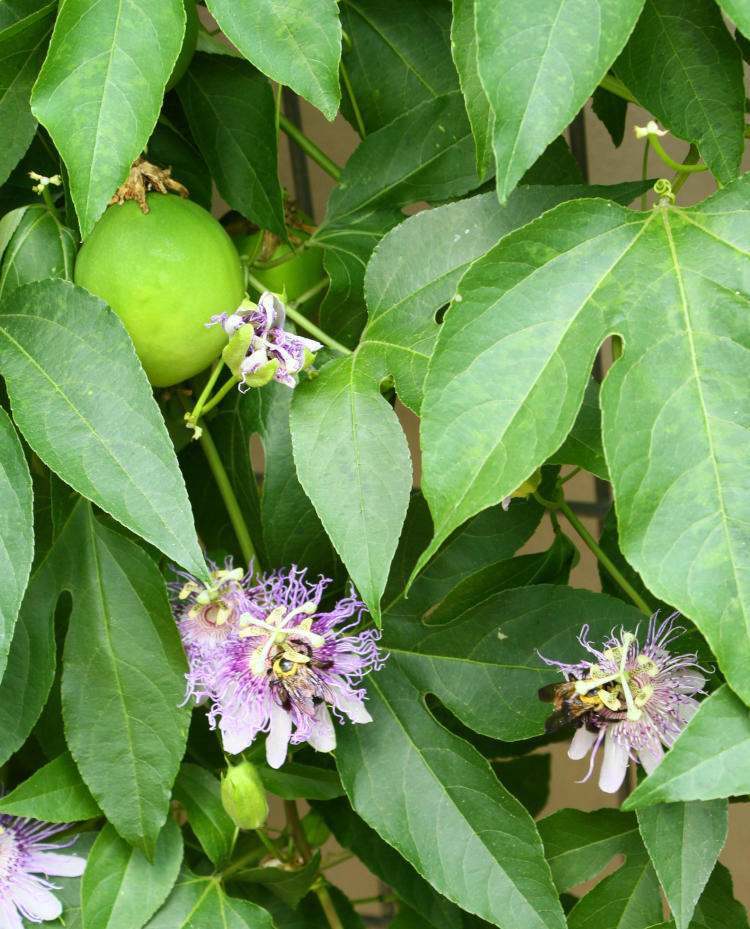
Against one particular building is a trellis that hosts some abundant purple passionflowers (Passiflora incarnata,) including several ripening fruit. The carpenter bees, however, were still visiting the past-peak blossoms, and I really have to do some detailed macro work of these when they’re at peak, because they’re one of the more peculiar flowers in the area, ideally adapted to have carpenter bees doing the pollinating. You can see it here a little, the umbrella-like stamens arching over and facing down to introduce the pollen to the bees’ backs.
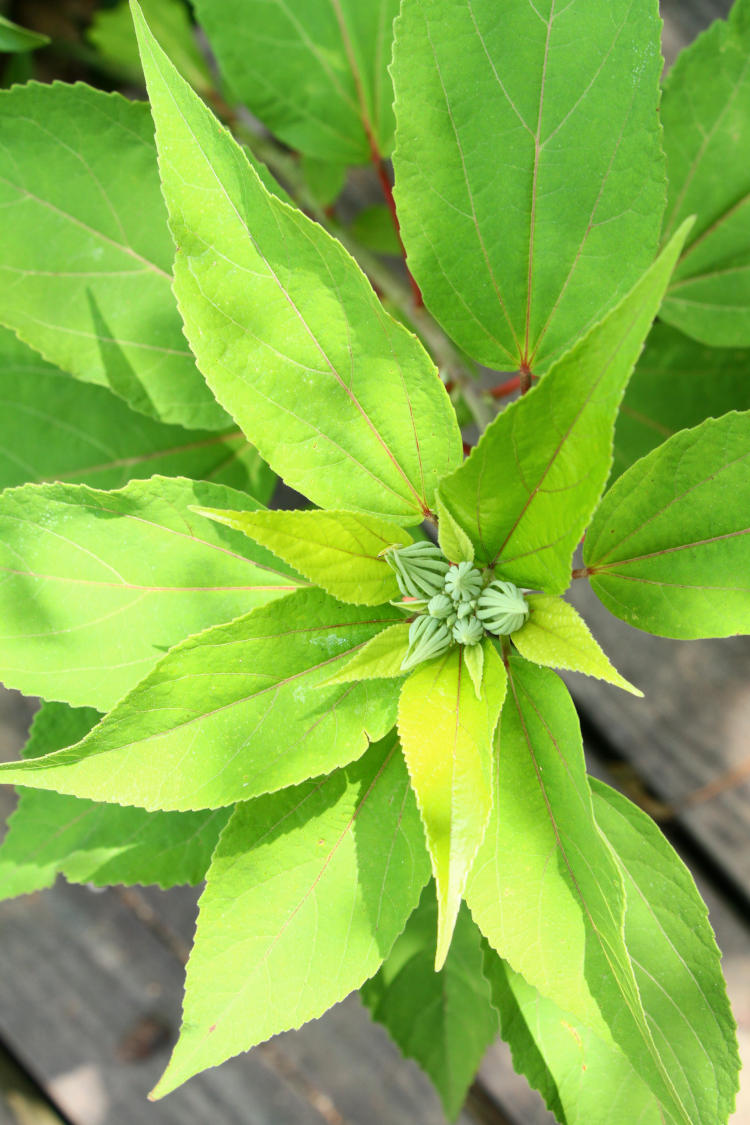
I think this is a hibiscus in the early stages of the flowers budding, but again, just the aesthetics. I tried to make sure the leaves filled the frame appropriately.
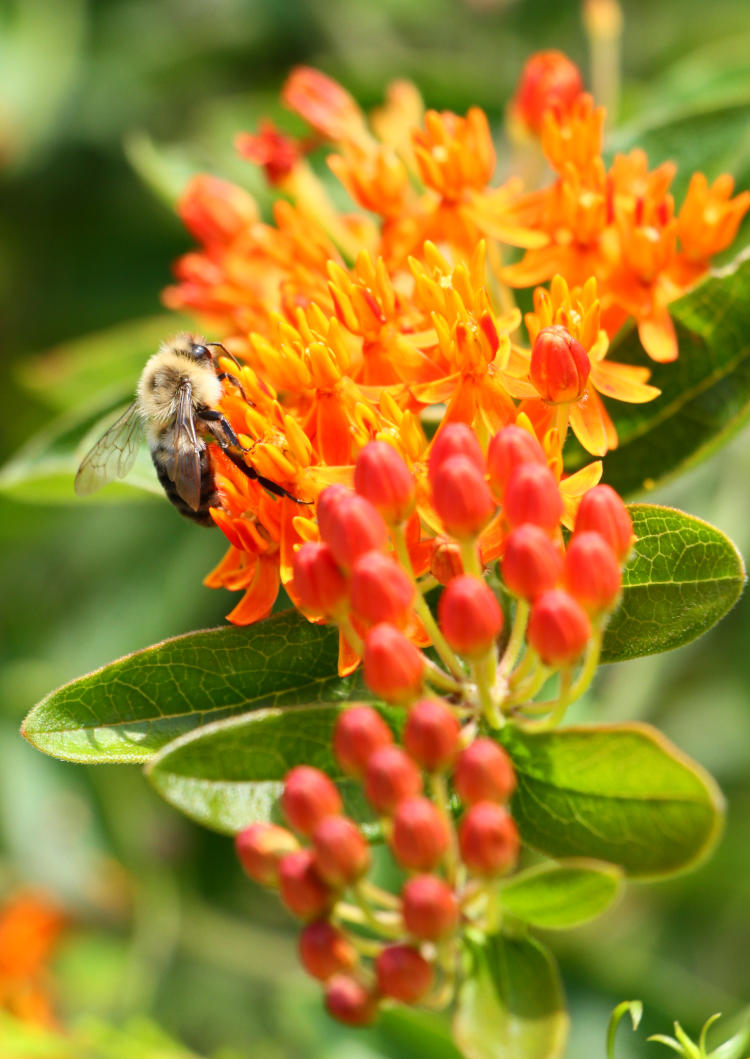
I’m quite comfortable saying these are a variety of milkweed flowers, but not too sure about that “honeybee” – the head and eyes don’t look quite right, and I think this may be a mimic, but it never gave me the opportunity for more detail than this. Still, aesthetics.
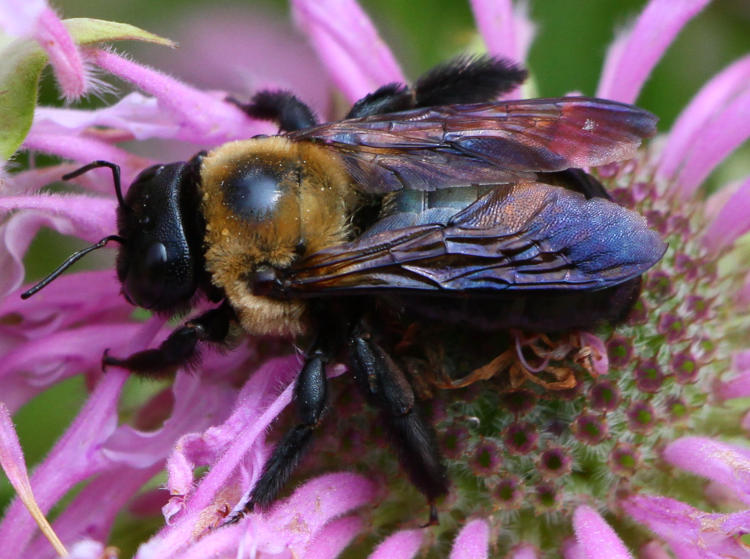
The flower is a wild bergamot, of which I approve because it’s what makes Earl Grey tea (I mean, aside from certain kinds of black tea leaves.) The carpenter bee was almost motionless atop it as countless others serviced the flowers exuberantly, and why it was so still I can’t say, though I did see it feebly try to ward off interlopers. Rough night? Counting to 100? Got me, but we’re here for the detail of the wings, which caught the light just right.
And finally,
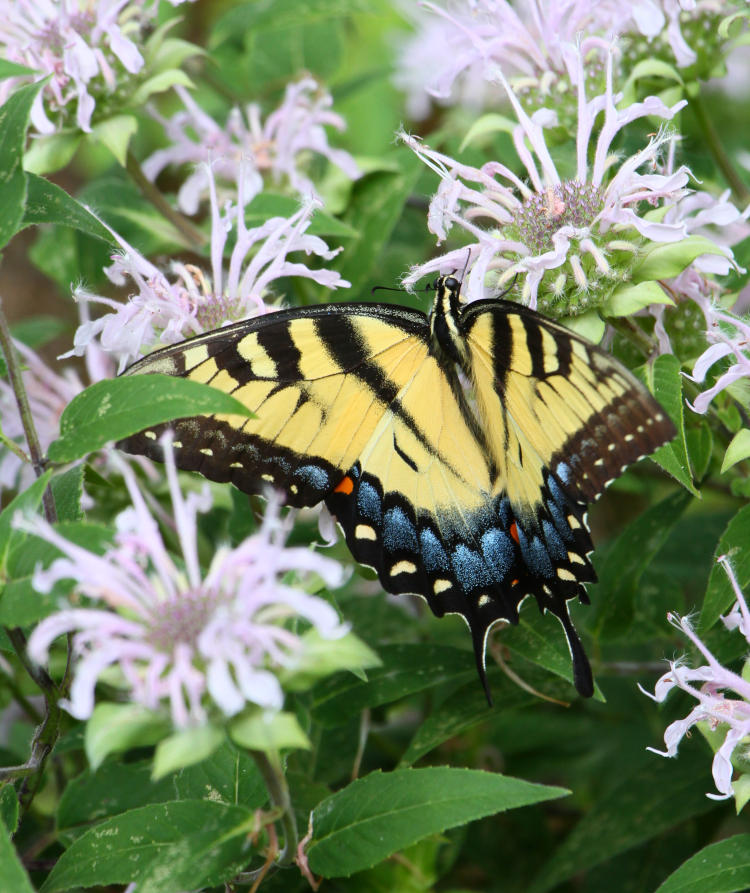
The bergamot appears again, this time being visited by an eastern tiger swallowtail (Papilio glaucus) – I believe, anyway, because they seem abundant around here and I see the black morphs from time to time, while the common yellow swallowtail does not have those. But let’s not forget about them aesthetics, the complementary colors all working together here. Who needs sciencey stuff when you have all that? Okay then.




















































